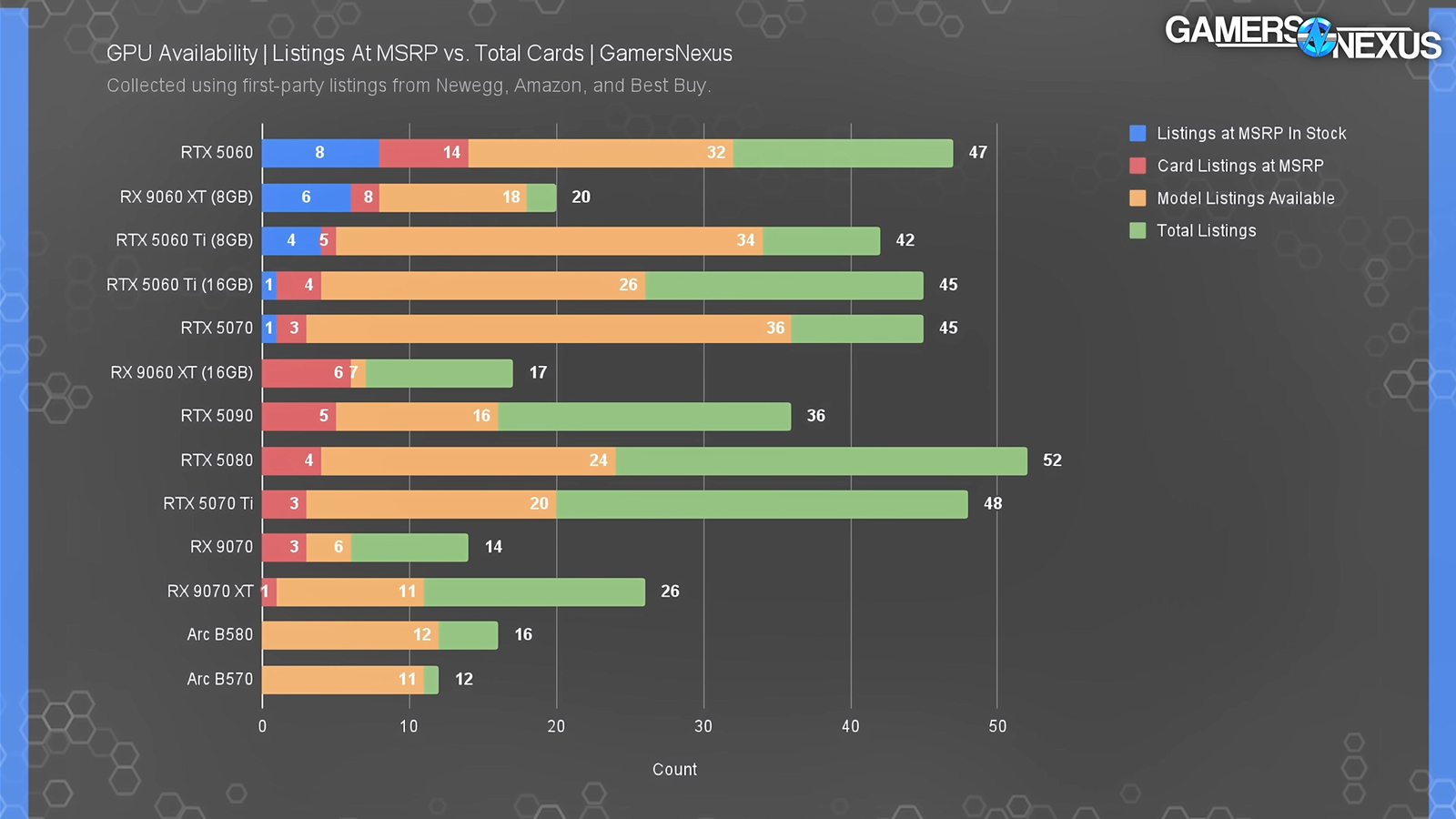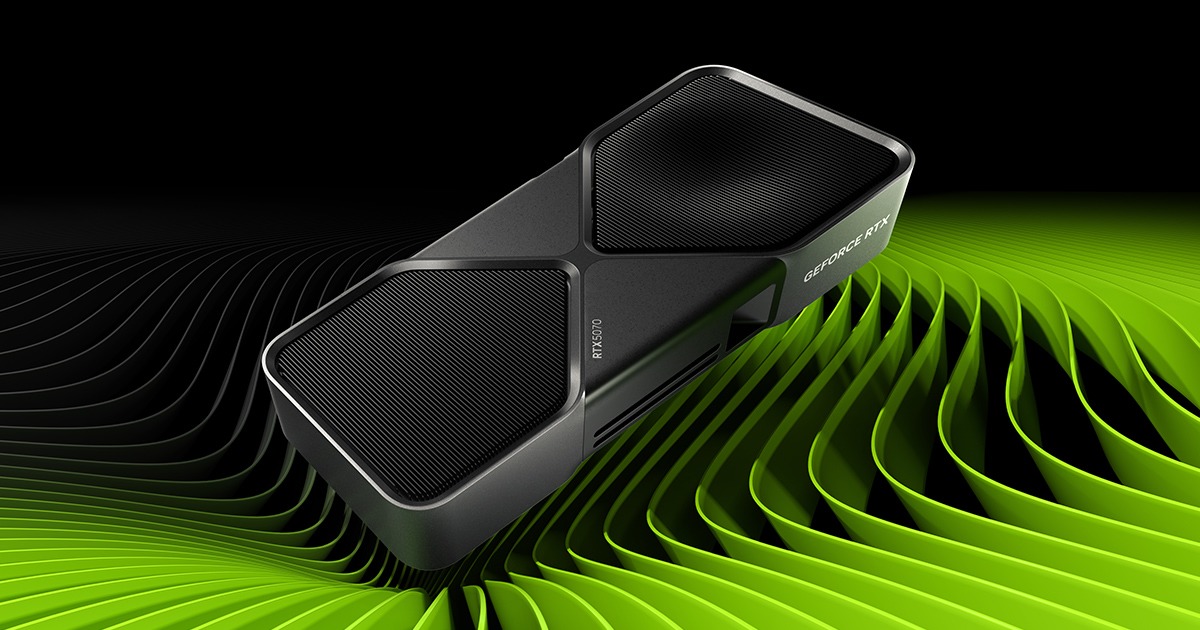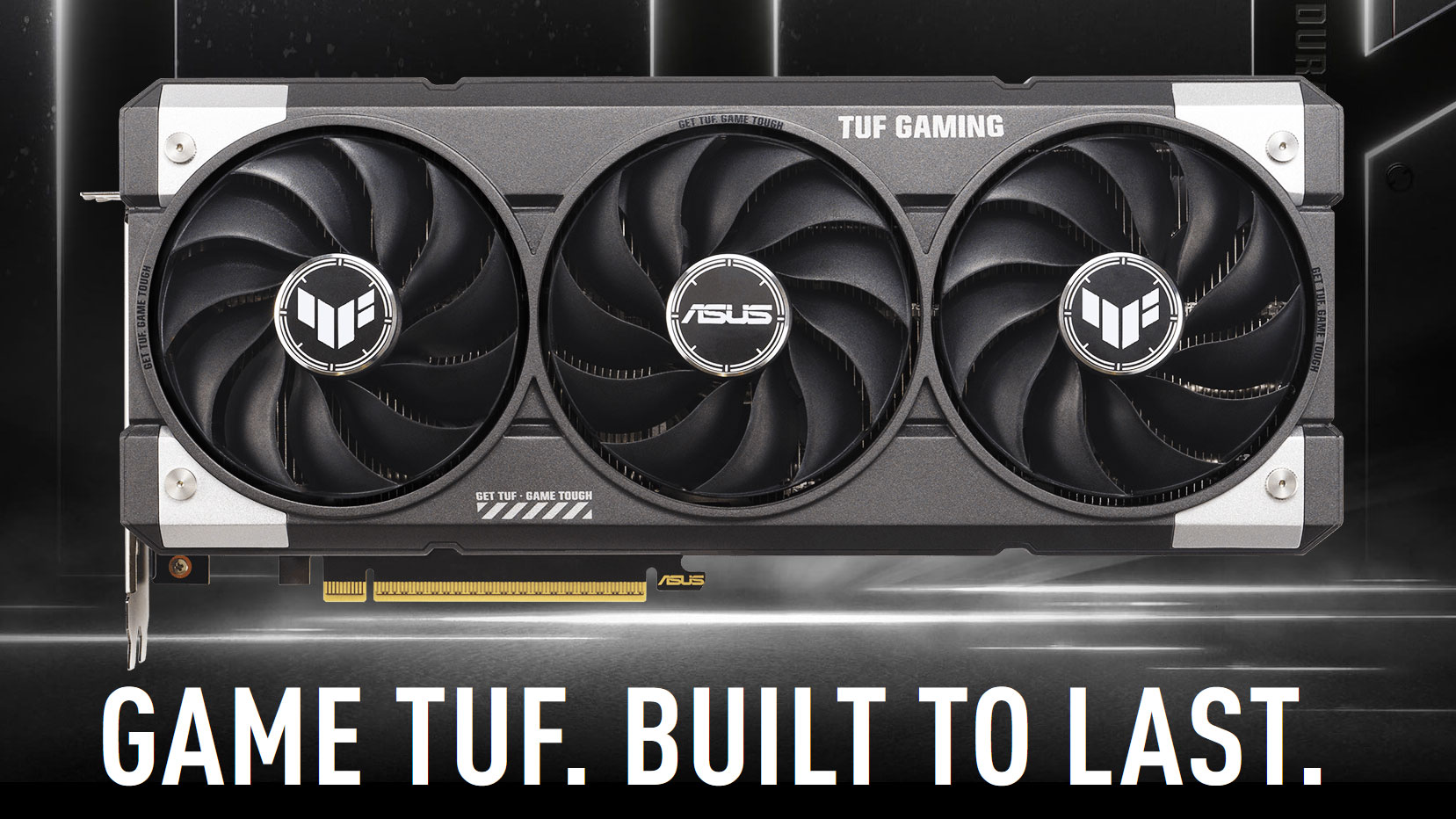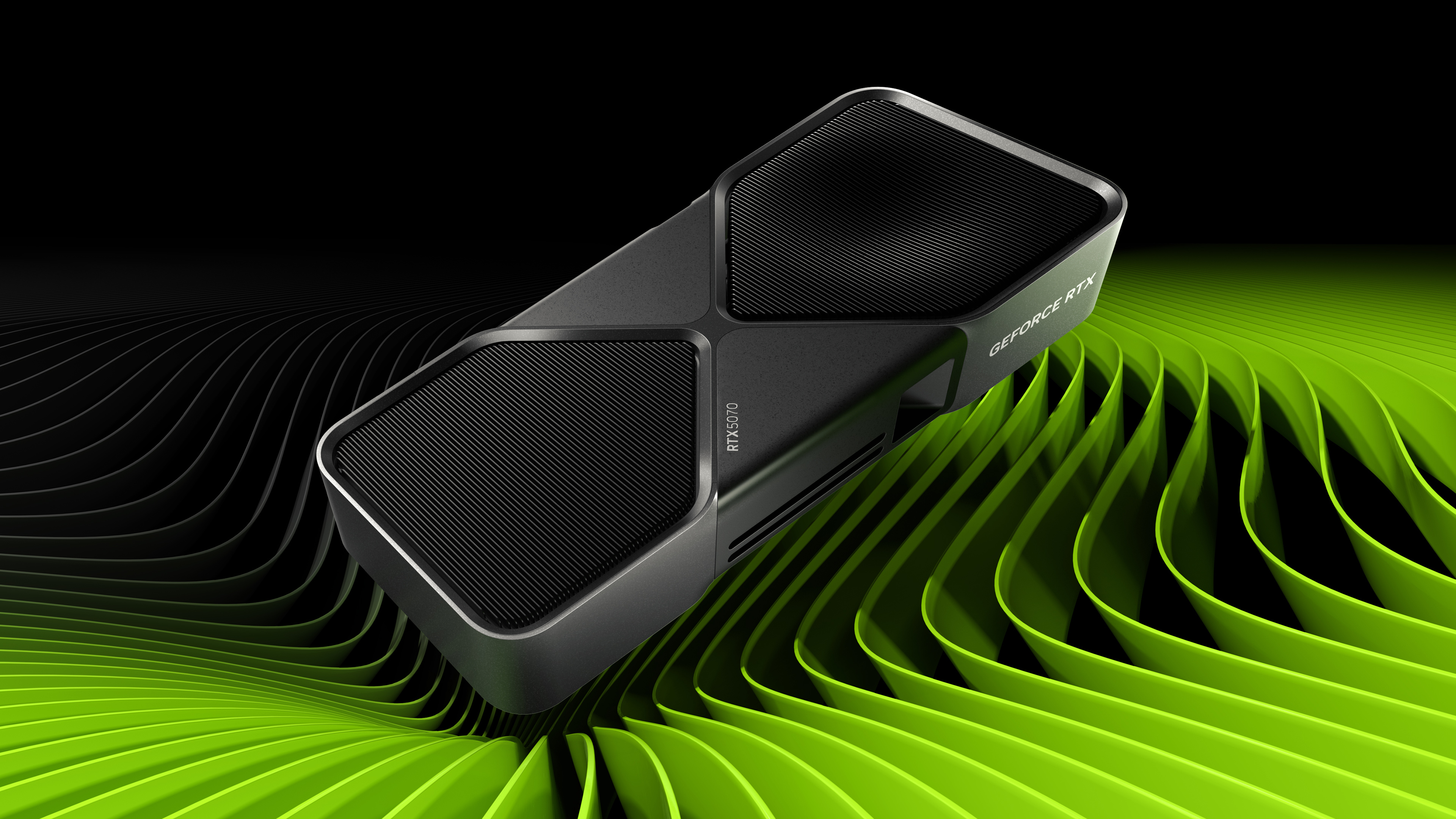Many GPU buyers are hard-pressed to find a listing at MSRP nowadays, meaning you’ll have to extend your budget beyond what was announced on stage if you want to build a new PC with a modern graphics card. Unfortunately, it’s difficult to track all pricing changes, especially as these, along with stock data, rapidly evolve. Thankfully, Gamers Nexus has compiled all available data as best it could and presented the trends in a video. Gamers Nexus EIC and host Stephen Burke also said that the figures shown would likely change due to the aforementioned reasons, but that the report can serve as a baseline for anyone in the market for a new GPU.
According to Gamers Nexus, out of the 420 total listings found on Newegg, Amazon, and Best Buy, 56 were listed at MSRP, but only 20 were actually in stock. Some retailers also reportedly confirmed that a few of the unavailable MSRP listings were not coming back at the same price, meaning less than 5% of all the graphics cards listed sit at the price given on stage. It also listed the MSRPs of all current-generation cards (except for the RTX 5050), compared them to the average available price, and found that GPUs were priced about 28% higher, or a $134 premium on MSRP.

The worst offenders are the RTX 5090 and RTX 5080 GPUs, which, on average, are priced at more than 50% of the MSRP. This shows Nvidia’s monopoly of the high-end GPU market, highlighting the need for competition. Intel Arc B580 and B570 are also egregiously overpriced, with the average listing getting more than a 50% markup.
You may like
-
 Nvidia RTX 50-series demand drops in Germany — cheapest models of all but RTX 5090 priced at MSRP or lower
Nvidia RTX 50-series demand drops in Germany — cheapest models of all but RTX 5090 priced at MSRP or lower -
![]() Nvidia reportedly raises GPU prices by 10-15% as manufacturing costs surge
Nvidia reportedly raises GPU prices by 10-15% as manufacturing costs surge -
 Asus RTX 5060 cards range between $340 and $410 in early Best Buy listings — That’s at least $40 above Nvidia’s MSRP
Asus RTX 5060 cards range between $340 and $410 in early Best Buy listings — That’s at least $40 above Nvidia’s MSRP
Burke noted that this was likely because one add-in board partner — Gunnir — has priced its listings so high that it’s skewing overall statistics. It’s only the RTX 5060 Ti (16GB) and all the other 8GB graphics cards that have their average selling price that is less than 20% higher than MSRP. In fact, out of the 20 GPU listings that were available at MSRP, only one — the RTX 5070 — had 16GB of VRAM.

